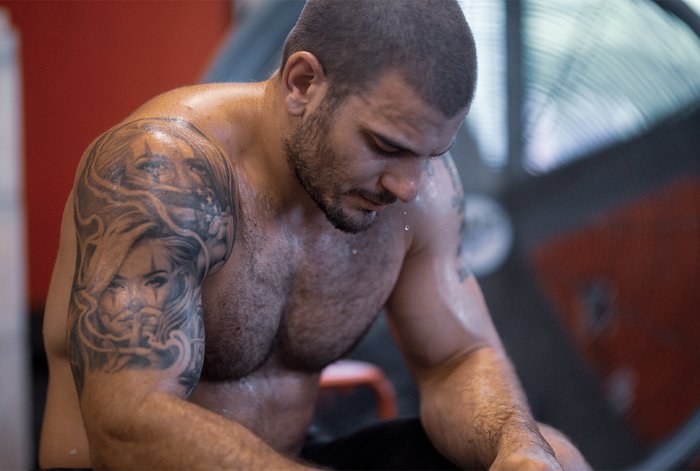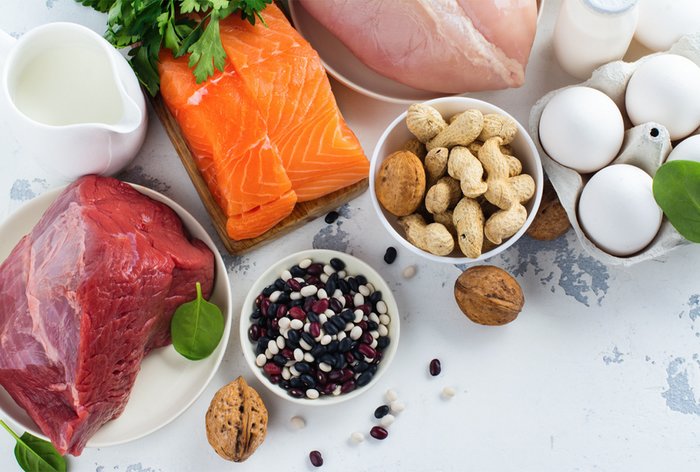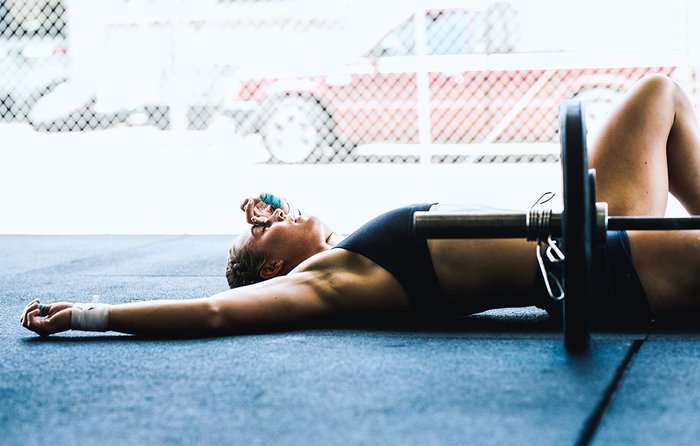Products You May Like
When I first started training seriously in the late 90s and early 2000s, the post-workout window was gospel. We all knew that if you didn’t drink that recovery shake—with exactly a 1-4 protein-to-carbohydrate ratio—within 15 minutes of your workout, you were losing all the gains. OK, maybe not all of them, but most of them. In recent years, the concept of the “anabolic window” has come under fire, but while it may not be as important as we once believed, you can still do things after your workout to maximize your progress.
Why Is the Post-workout Period Important?
In my gym, we use a system we created called R7 to write our programs. It looks something like this:
- R1: Release (foam roll)
- R2: Reset (breathing and mobility optimization)
- R3: Readiness (warm up)
- R4: Reactive (power and explosive work)
- R5: Resistance (strength training)
- R6: Resiliency (conditioning)
- R7: Recovery
The last R in the system is recovery, and I often tell my coaches—as well as the clients and athletes that I train—that it could be the most important part of the workout.
Imagine two different scenarios:
- Scenario 1: You had a pre-workout drink on your way to the gym and then absolutely crushed your workout. Your heart rate is up, the endorphins are flowing, and, feeling great about yourself, you head out the door to go about your day.
- Scenario 2: Imagine the exact same scenario, but before you walk out the door, you lie with your feet elevated and breath deeply for 3-5 minutes.
In which example will you recover faster? While I don’t think they’ve done any research on this yet, I strongly believe that kick-starting the recovery process prior to leaving the gym will boost your results.
Taking it a step further, I think it’s limiting to consider the post-workout window as just the 3-10 minutes after a session. In reality, the post-workout window starts when you finish a session and doesn’t “close” until you start your next one. When you start thinking of recovery on a more macro level, you begin to realize that everything you do in between workouts either positively or negatively influences your training sessions.
3 Ways to Improve and Expedite Recovery
1. The Nervous System
As I mentioned in the first article in this series, “How Long Should You Rest Between Workouts?” it’s limiting to think of recovery solely from a muscular perspective. You need to begin by thinking about the nervous system first, because it’s the one running the show.
In Scenario 1 above, that person is stuck in sympathetic overdrive. The goal is to find a balance between the sympathetic “fight or flight” nervous system and the parasympathetic “rest and digest” nervous system.

Being sympathetic when you’re working out isn’t a bad thing. It’s what primes your system and enables you to push those heavy weights. The problem is when you don’t have that off switch—when you can’t tap into your parasympathetic nervous system and move into rest and digest mode.
What do you do to switch gears?
There are tons of options, but my personal favorite is to take 10 deep breaths. It doesn’t have to be anything fancy. You can simply to lie on your back with your feet elevated and breathe for 3-5 minutes, like this:
- Take 3-5 seconds and inhale through your nose.
- Take roughly twice as long and exhale fully through your mouth.
- Pause for 3-5 seconds in the fully exhaled position before inhaling again.
Follow this pattern and make it a goal to extend each breath longer than the previous one. When you’re just coming off a grueling workout, those first couple of breaths will be short and shallow, but as you work to slow your heart rate and control your breathing, you’ll find it gets easier.
2. Post-Workout Nutrition
Getting the right post-workout nutrition is the second step in the recovery process. The parasympathetic nervous system is called the “rest and digest” system for a reason—and in this case, I’m putting a heavy emphasis on digest. If you want that post-workout fuel to be absorbed and get where it needs to go, you have to chill out your system first!
This is where our evolved thinking about the post-workout window comes in. While there may not be one magical time after the workout to ingest nutrients, it’s undeniable that you need to get enough protein throughout the day to maximize your gains. In other words, don’t think solely about the post-workout window, but instead think about balancing protein across the day. In that sense, the time right after your workout is no more (or less) important than any other.
In a study done on dietary protein distribution, two groups of subjects got different diets that contained the same total protein and energy intake.[1] Group 1 ate a balanced protein intake across breakfast, lunch, and dinner, while group 2 ate a skewed menu with roughly 2/3 of the protein intake coming at dinner.

Protein synthesis was reviewed 24 hours afterward, and it was 25 percent higher in the balanced approach.
Another similar study seems to corroborate this need for a more balanced approach to protein intake and gives some guidelines as to how much protein you should be looking to take in on a daily basis:
“Based on the current evidence, we conclude that to maximize anabolism one should consume protein at a target intake of 0.4 g/kg/meal across a minimum of four meals in order to reach a minimum of 1.6 g/kg/day. Using the upper daily intake of 2.2 g/kg/day reported in the literature spread out over the same four meals would necessitate a maximum of 0.55 g/kg/meal.”[2]
So, while our beloved post-workout window may not be the be-all, end-all we thought it was, we still need high-quality protein in our meals after training as part of a more balanced approach to total protein intake. And a protein shake such as XTEND Pro can contribute to hitting your daily protein target.
3. Sleep
While many people don’t think of sleep as part of the post-workout equation, I would argue it may be the most important of all. As I said regarding my definition of the post-workout window, it’s anything that occurs after your training session ends and before the next one begins.
Chances are you’re going to sleep at least once—if not twice—between training sessions. That sounds like a big deal to me! When you sleep, protein synthesis goes up, human growth hormone is released, and you give your body the rest it needs to recover and prep for that next session.
On the flip side, if you aren’t getting adequate sleep—or enough deep sleep—it’s going to impair your recovery and you’re not going to reap all the benefits of that awesome training session.
The emphasis on sleep may require a shift in mindset. Don’t think of your workout as over when you’ve left the gym. The workout isn’t over until you’ve gotten a great night sleep after the training session! It may sound kind of corny, but when you start to place as big an emphasis on sleep as you do your training, you’ll be shocked at how good you feel during your sessions.

The Complete Recovery Process
While the original idea of the “anabolic window” may be dead, that doesn’t make the post-workout period any less valuable. (And if you like drinking your protein shake immediately post-workout, more power to you.) Make it your goal to think of recovery in a more global fashion, using breathing, nutrition, and sleep as a three-pronged approach to maximize your success both in and out of the gym!
References
- Mamerow, M. M.; Mettler, J. A.; English, K. L.; Casperson, S. L.; Arentson-Lantz, E.; Sheffield-Moore, M.; Layman, D. K.; and Paddon-Jones, D. (2014). Dietary Protein Distribution Positively Influences 24-h Muscle Protein Synthesis in Healthy Adults. The Journal of Nutrition. 144(6), 876-880.
- Schoenfeld, B. J., and Aragon, A. A. (2018). How much protein can the body use in a single meal for muscle-building? Implications for daily protein distribution. Journal of the International Society of Sports Nutrition. 15(1).
